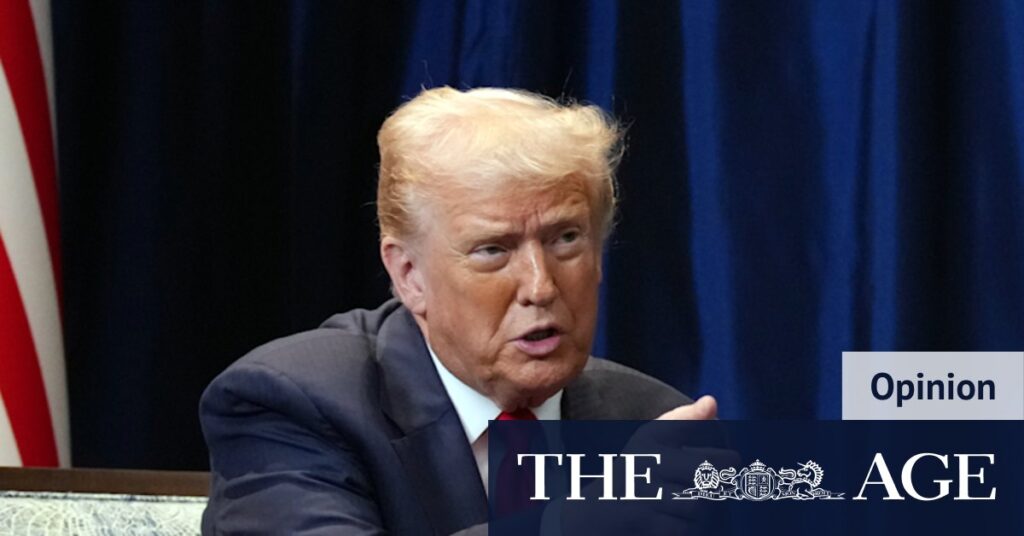
The judgment day for most of Donald Trump’s tariffs looms this week, with the US Supreme Court set to hear an appeal against a lower court’s ruling that they are illegal. Should the Supreme Court rule against his administration’s reciprocal and baseline tariffs, the “Liberation Day” import levies of between 10 percent and 50 percent against all the countries the US trades with—and perhaps the trade and investment deals that have been struck using them as leverage—would have to be withdrawn, and the $90 billion in revenue the tariffs have generated so far might have to be refunded.
The potential ruling could reshape the landscape of American trade policy. Trump could still maintain tariffs, but he would need to use different legislation involving extensive investigations, or resort to another law that imposes a 15 percent ceiling on tariffs, only applicable to countries with substantial trade surpluses with the US and with a 150-day limit on duration.
The Legal and Economic Implications
Trump utilized Section 232 of the Trade Expansion Act of 1962 for his sectoral tariffs on steel, aluminum, and cars, among other products. These tariffs have not been challenged. Last weekend, Trump described the Supreme Court hearing as “one of the most important cases in the history of our country,” warning of dire repercussions if the tariffs were struck down.
“If a president was not able to quickly and nimbly use the power of Tariffs, we would be defenseless, leading even to the ruination of our Nation,” Trump wrote on Truth Social.
The administration’s lawyers argue that denying the president the authority to impose tariffs would “thrust America back to the brink of economic catastrophe.” However, there are several issues with this assertion. The power to impose tariffs lies explicitly with Congress. While the tariffs could raise about $3 trillion over a decade, the revenues are modest compared to a US federal government deficit of $1.8 trillion and rising.
Economic Context and Historical Perspective
America, with total trade amounting to around 25 percent of its GDP, is one of the least trade-exposed economies. In a $30 trillion-plus economy, a few hundred billion dollars a year is almost immaterial. There was no economic catastrophe before the tariffs. Since their implementation, the US economy has slowed, unemployment has risen, inflation has been edging up, the manufacturing sector has shrunk, and investment has been drying up.
The tariffs have caused uncertainty and economic harm, without materially influencing whether the US is a rich or poor nation. It could be argued that they are making America poorer and that removing them would help boost economic growth, lower unemployment, and reduce inflation.
Political Ramifications and Future Outlook
Trump claimed a national security emergency due to America’s trade deficit gave him authority to impose the tariffs, using fentanyl use as a rationale for tariffs on Canada, Mexico, and China. The US has run trade deficits for the past 50 years, generally a period of increasing prosperity. The deficits are driven by an imbalance between US savings and investment, not unfair trade practices.
The tariffs serve as a de facto tax on US companies and consumers, with importers paying duties upon landing goods in America. The easiest way for Trump to fill the revenue gap if the Supreme Court deems his tariffs illegal would be to raise US tax rates, undoing the tax cuts for the wealthy in his One Big Beautiful Bill Act.
A court defeat would be embarrassing for Trump and his administration, given their treatment of America’s allies during the tariffs’ introduction. US Treasury Secretary Scott Bessent has warned that a rejection of the tariffs could create a “dangerous diplomatic embarrassment” for the US, though it would primarily embarrass Trump and his team.
The Supreme Court, with its majority of Republican-nominated judges, has generally been favorable to Trump, increasing executive power and diminishing Congress’s role. It’s possible the court could overturn the lower court’s ruling, effectively granting the president the power to impose tariffs arbitrarily, despite the US Constitution assigning that power to Congress.
Should the court decide the tariffs are lawful, it would not only expand Trump’s powers but also those of future presidents, affecting foreign policy and economic strategies.
The Business Briefing newsletter delivers major stories, exclusive coverage, and expert opinion. Sign up to get it every weekday morning.







